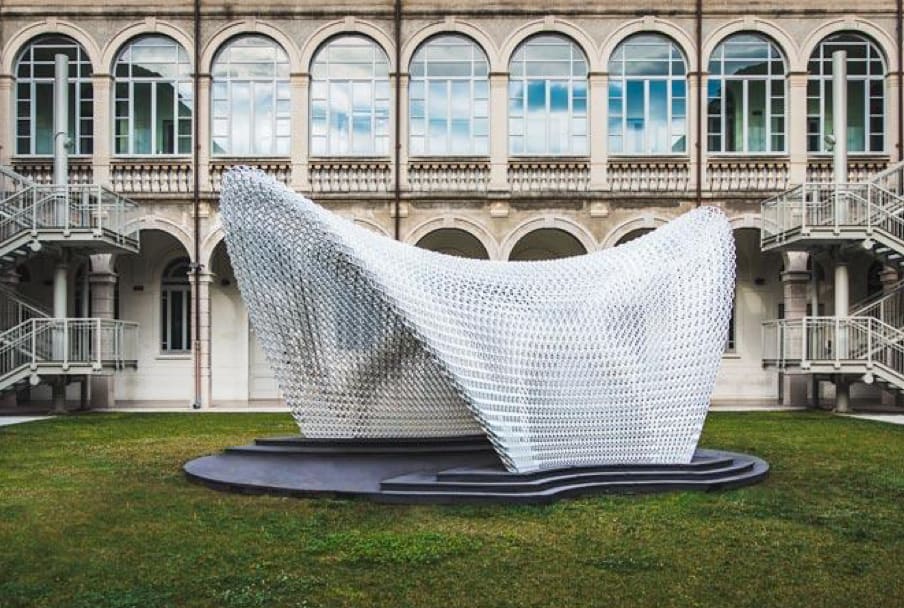A pioneering lightweight architectural pavilion that fuses advancements in 3D printing with bio-inspired computational design has been completed in Milan.
The fabrication process of the building components was made possible by five printers supplied by 3D printer manufacturer WASP. The company’s Spitfire extruder was also introduced for the first time to shape stiff components.
The prototype is the result of the doctoral research of Roberto Naboni, architect and assistant professor at the University of Southern Denmark (SDU), who designed and developed the pavilion at Politecnico di Milano, together with a team of specialists in experimental design and construction.
The project looks into 3D printing for answers to the emerging problem of scarcity in material resources. The design is based on a computational process that finds inspiration in nature, specifically in the materialisation logics of the trabeculae, the internal cells that form the bone microstructure.

Trabeculae Pavilion is inspired by the trabecular bone and realized with Additive Manufacturing © Gabriele Seghizzi
From this investigation, custom algorithms have been developed to support the creation of a cellular load-responsive structure with continuous variations in sizing, topology, orientation and section, to maximise material efficiency.
“The last decades have witnessed an exponential growth in the demand of raw materials due to the rapid urbanisation and industrialisation of emerging economies,” says Naboni.
“This research looks at biological models and at the opportunities offered by the new additive production technologies in order to find sustainable solutions to the exploitation of materials. Our objective is to explore a new model of construction: advanced, efficient and sustainable.”
The built pavilion is a load-responsive shell comprising 352 components covering a total area of 36 sq m, shaped additively by a 112km-long extrusion of a high-resistance biopolymer, specifically developed with industrial partner FILOALFA to elevate Fused Deposition Modelling (FDM) to construction purposes.

The view of the lattice structure varying in its topology, porosity and orientation according to variable local stress conditions © Gabriele Seghizzi
The innovative methods involved for the design allow for an efficient material distribution at multiple scales, which permits an extremely resistant and lightweight structure with a variable weight to area ratio of 6 to 10 kg/m2 – about 10 times lighter than typical construction techniques with comparable mechanical performance.
Beyond its technical features, the pavilion is an outstanding expression of a tectonic system conceived with and for 3D printing, which enables multiple high-resolution optimisation logics with precision to a tenth of a millimetre.











